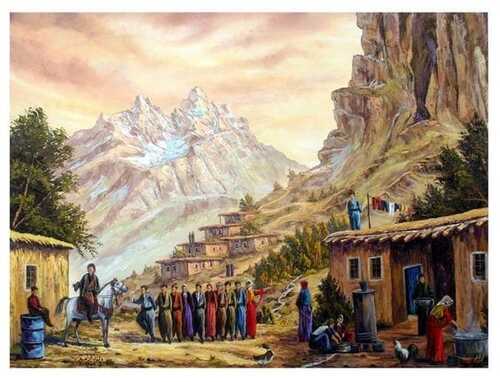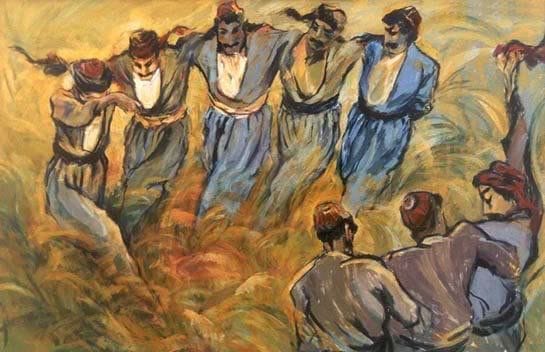I have tried to give some information about the philosophy of Kurdish dance in the middle parts and the southern regions of Kurdistan in this part.
Halparke (Kurdish dance) is a kind of performance that Kurds do to show their feelings on different occasions. Kurdish dance consists of happiness, sadness, wars and struggles, uprisings, and success.

"Xenophon" Identification of Kurdish Dance
Some Kurdish dance experts say that Kurdish dance (Halparke) origins trace back to our ancestors' era of "Astiyak", the leader of the Medes; "Xenophon", the Greek philosopher and historian, has mentioned Kurds in one of his texts and said: "when we were coming back from the battle we had with Cyrus the king of Persia, we asked a guide man to show us the way. He showed us a path and said that this way passes by the Kardokhans but be aware not to attack them and not to burn down their land. We asked him: who are these people? He replied: they are a clan of the Medes Kurds who belong to those who witnessed Cyrus's betrayal to Astiyak, their leader, and caused the separation of Kurds and Persians; they are also a part of the Ecbatana who have settled here and live autonomically, they do not interfere with any other clan's affairs avoiding any kind of oppression towards others unless you attack them, they will not bother you and if you ask for their help, they will help you out. In this part of the narration, Xenophon says that he asked the guide man, how do you know they are strong? The man answered: during a war, Darius sent 120 thousand men to attack them; when they reached the land of the Kurds, the Kurds were in the middle of a party dancing together. The troop went into the party but they were all captured. The Kurds had planned this and they surrounded the enemy's troops while dancing to capture them all." It is worth mentioning that there are several stories like this one about Kurdish dance.
Kurdish dance consists of several types and forms and each part of Kurdistan dances is in a different way. Some of these dances are epic and some are natural, some are particularly designed for wedding ceremonies however, each of these dance forms has its particular meaning and history.
We can classify Kurdish dance forms in various ways. First, those dance forms that are known as mystical which include those religious dance forms that are performed in special places. In this form, the neck and shoulders are moved more than the other parts of the body in harmony with the Daff musical sound. Some other forms of dance are carried out with music inside the Sheikhs' and Darwishes' homes and Khanaqa. For example, the Yarsan party is carried out with a Tanbour music instrument which is a kind of physical movement known as Tasawof Dance.

The Philosophy of "Faqiyana and Saq" in Kurdish Dance
Kurdish clothes are one of the symbolic and main parts of the Kurdish nation's culture. The Kurdish dance groups always try to wear Kurdish clothes, they all wear the kind of clothes particular to the region they come from in order to preserve it. All of these kinds of Kurdish clothes have a long history behind them and they are all designed and made by Kurds.
Another important part of Kurdish clothes is the special philosophy that includes "Faqiyana" or "Sorani" and another part is "Saq" or "Dolaq". The Kurdish dance experts believe that Kurds had wrapped the Faqiyana around their arms during wars so that they could put stones in them while fighting the enemy's soldiers and this had a fatal impact on their troops' defeat. They also wrapped their legs so that during a battle they would protect their legs from stones and thorns on the ground. Even nowadays, Faqiyana and Saq are used by some Kurdish dance groups.








